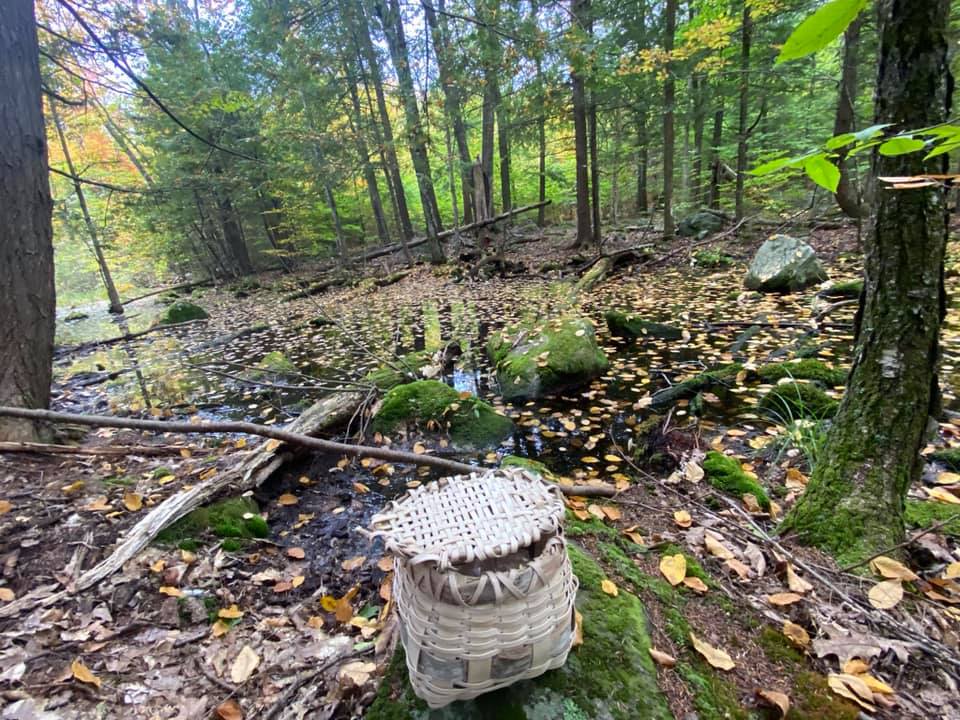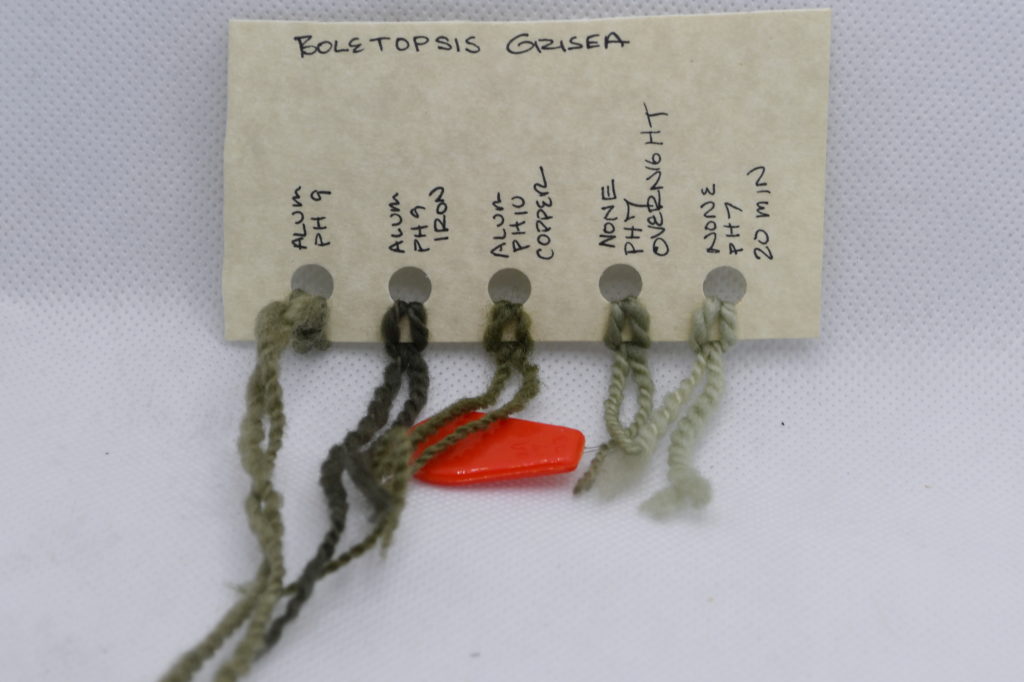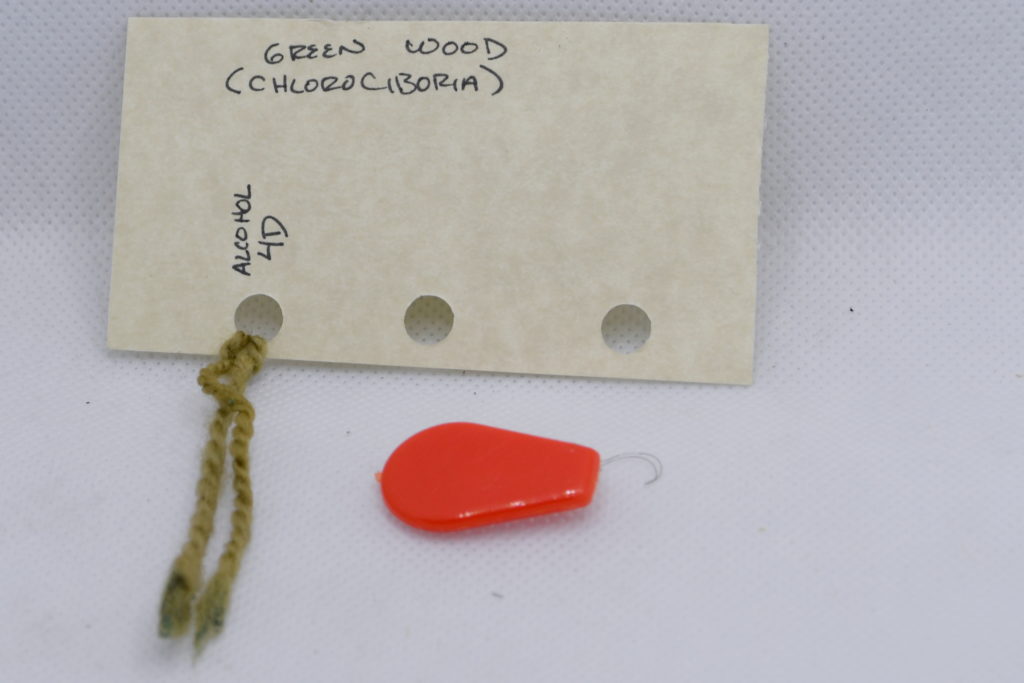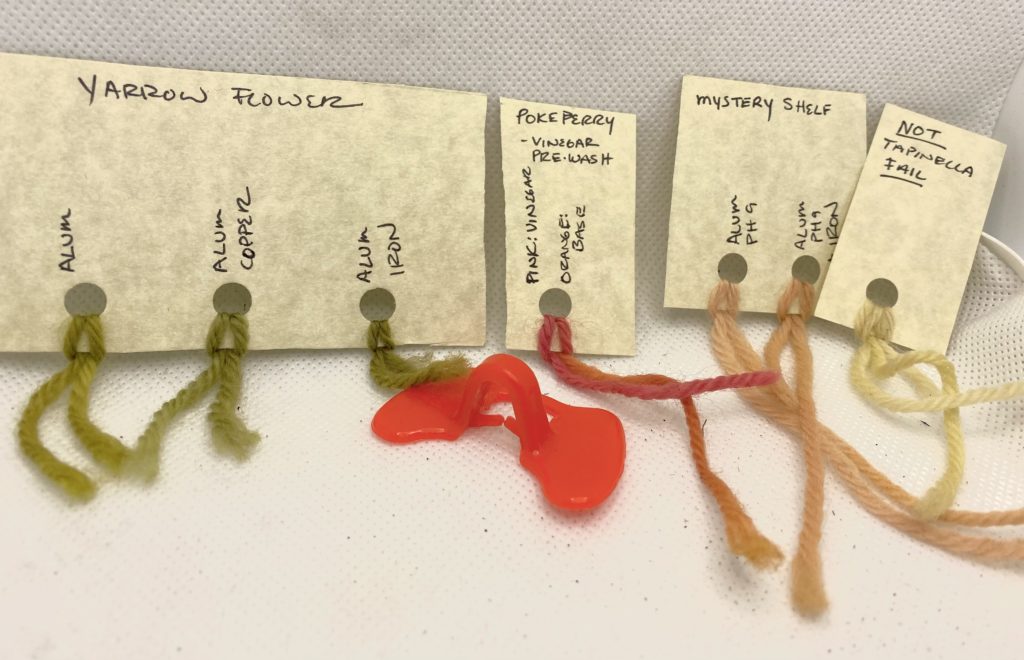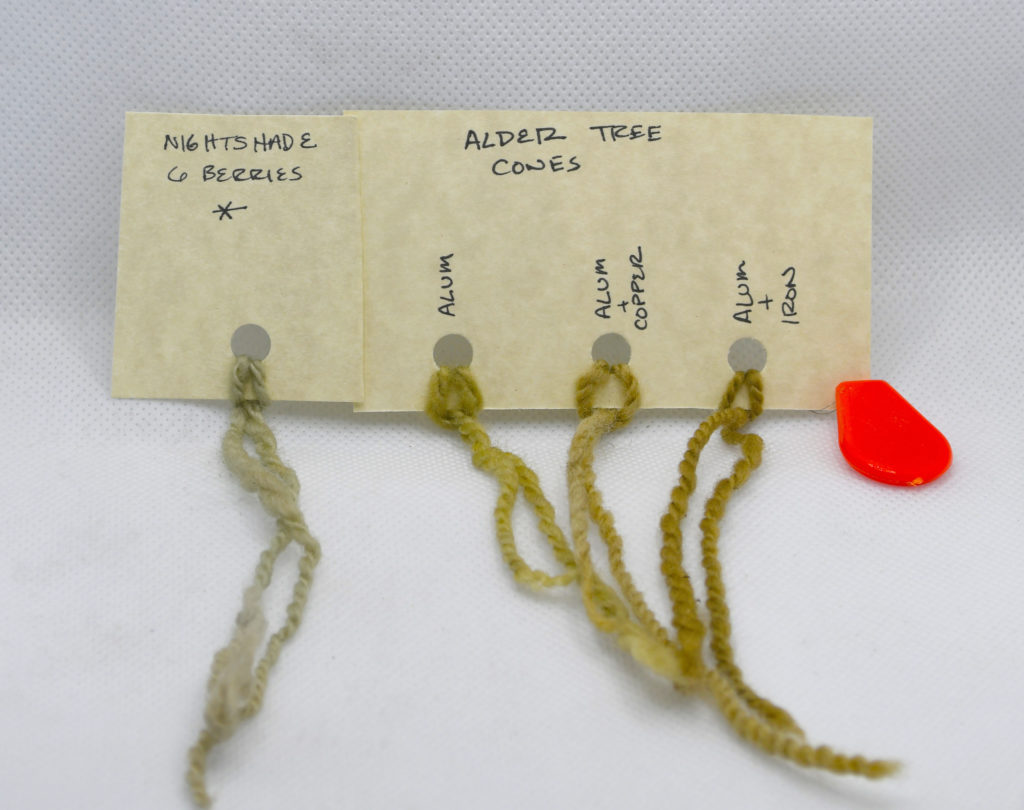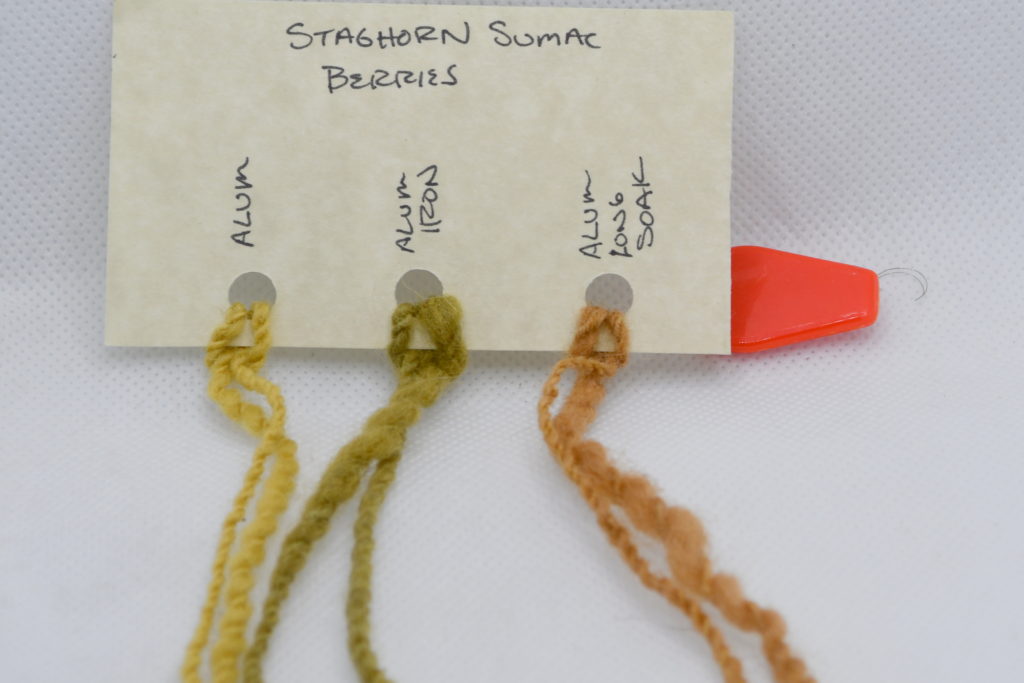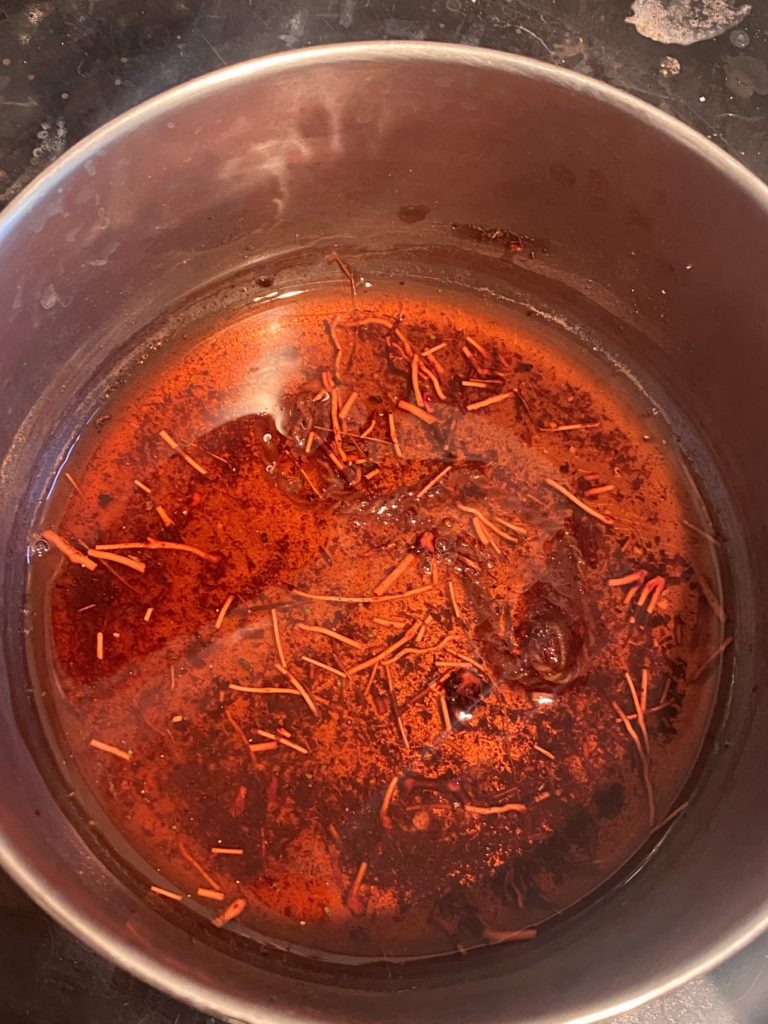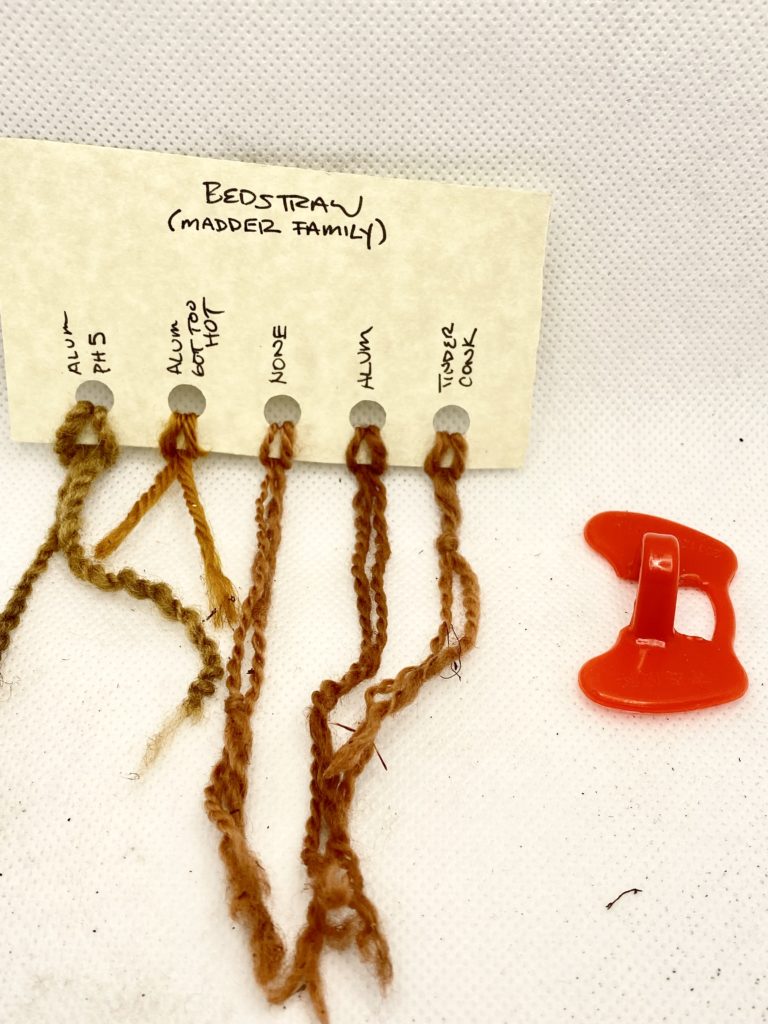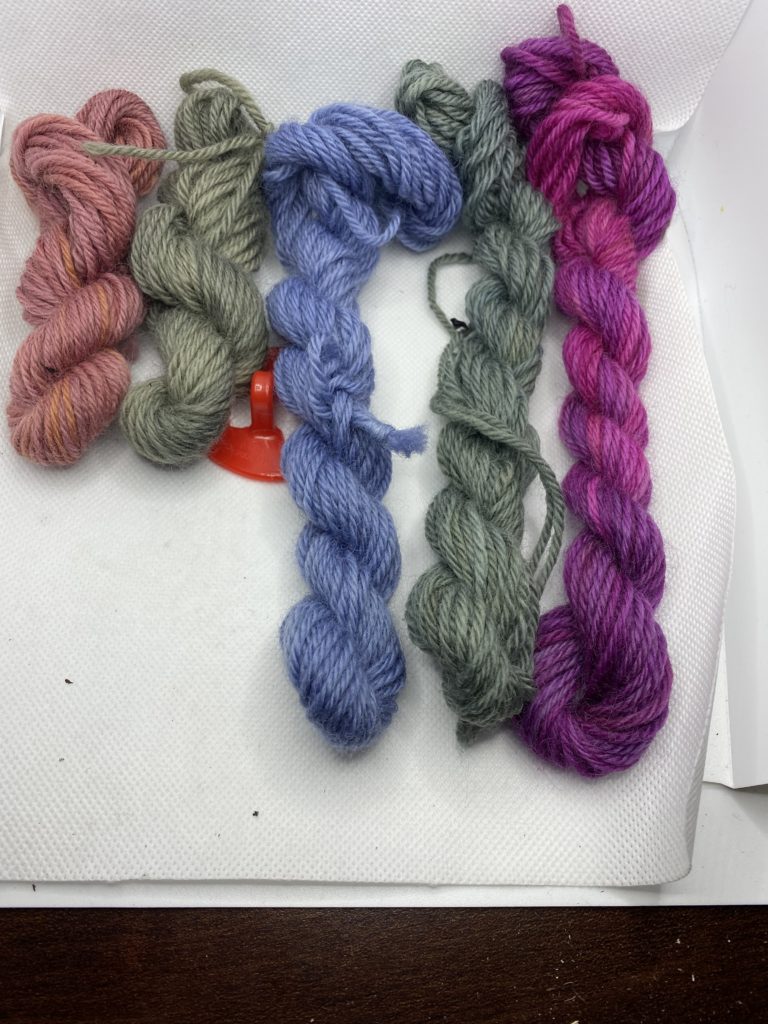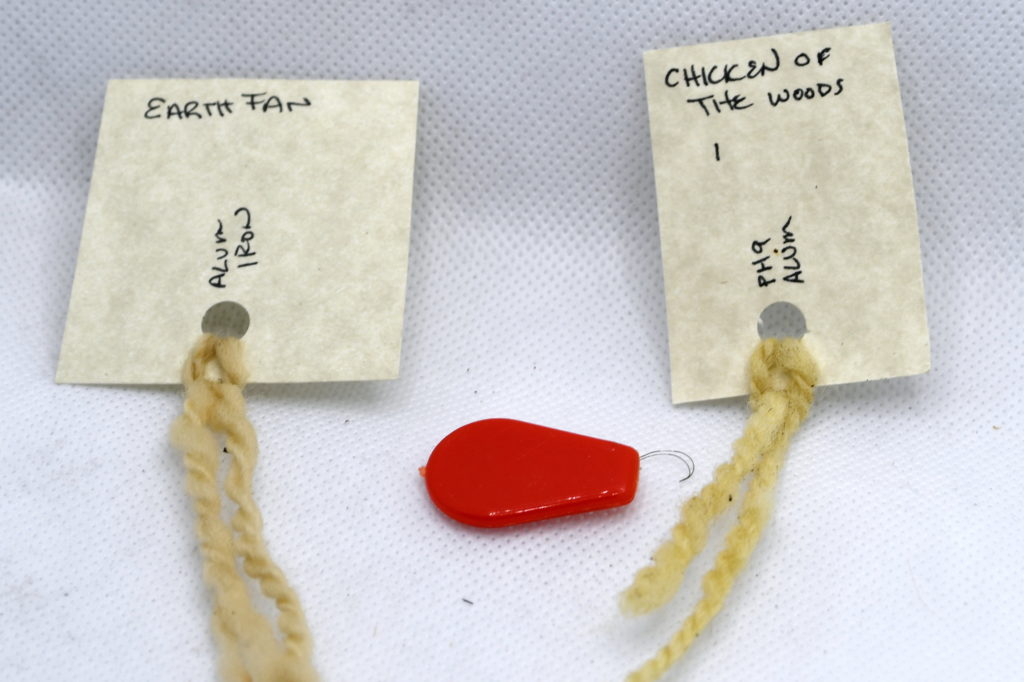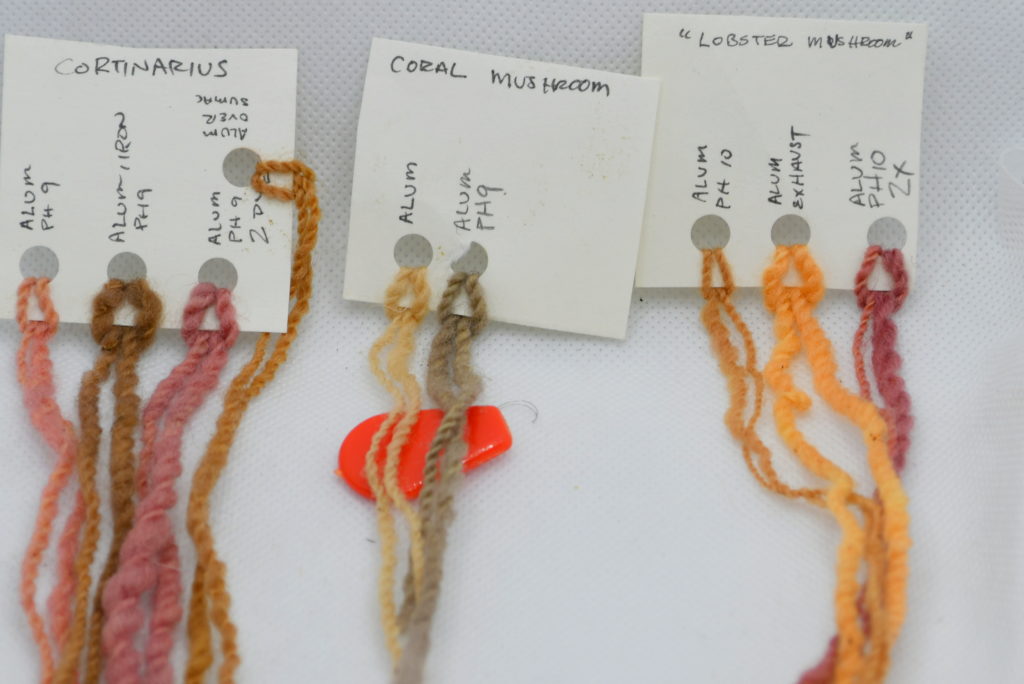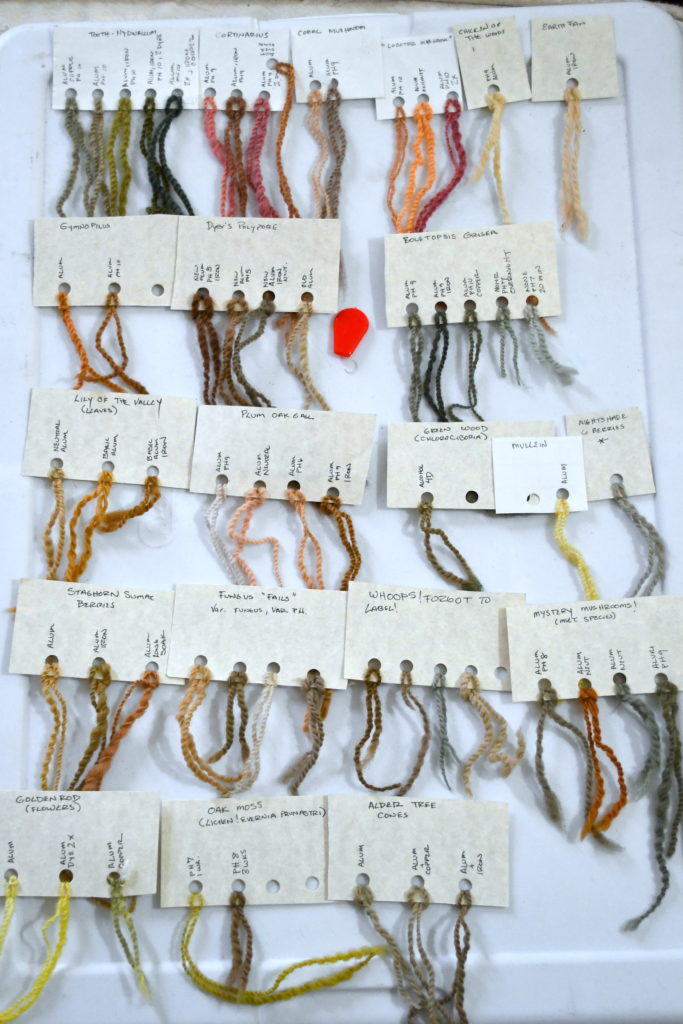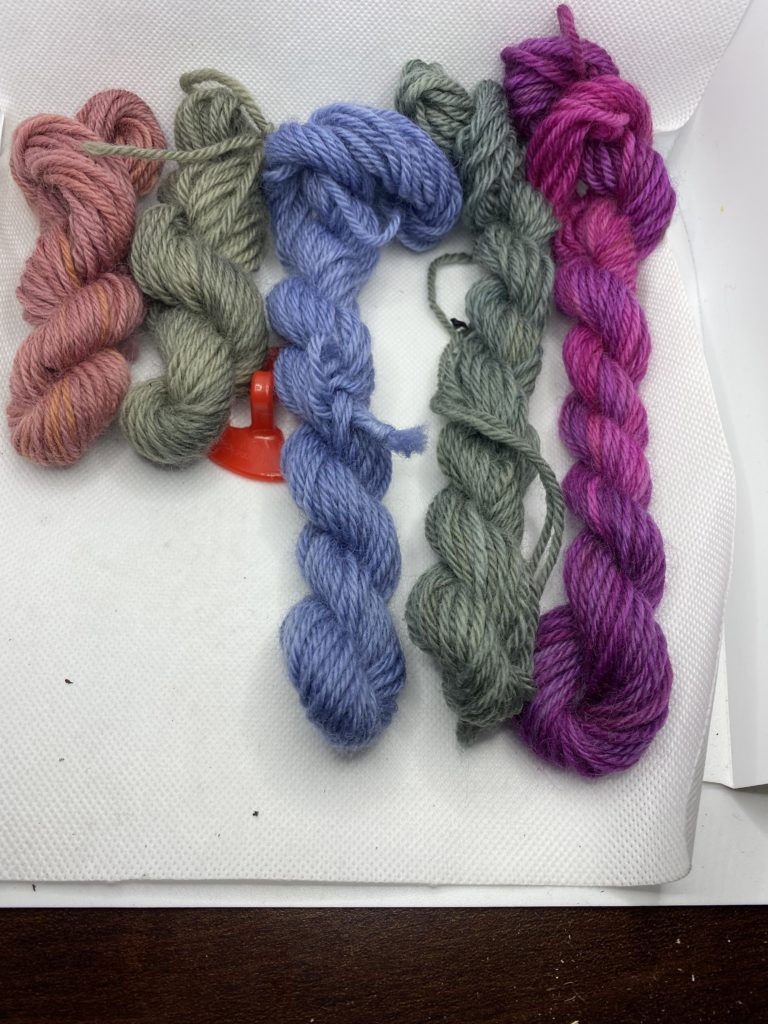Methods, Thoughts, Discoveries, and the Future
I am NOT a fiber person (haha) so my spinning skills are questionable at best. Hanks of undyed merino were purchased once my dyeing experiments outpaced my spinning speed!
To raise pH I used washing soda or ammonia, depending on the type of dyestuff and what results I saw from small pH changes.
To lower pH I used white vinegar.
I did most of my experimentation with a stainless steel pot and a million canning jars. Micro-experiments were carried out on paper plates for easy cleanup.
After weeks of shoving mushrooms in my pockets, or in plastic bags that then went into my pockets, I decided that I really needed a better solution. I used commercially-available basketry supplies, Alder twigs, and birchbark to make myself a gathering basket. I tried dyeing the cane with a mushroom dye, and the results were.. poor. I thought that maybe another plant-based dye might work better so tried one of the oak galls- and the results weren’t any better. So, I just skipped the colorant and wove the basket as-is. My daughter has named it my ‘Nature Purse’ 🙂
Thoughts and Discoveries
I love wandering through the woods! However, during the course of this project (and into the future) I have determined the following things:
- The answer is probably brown, or yellow (What’s this? I wonder what this will do!)
- Purple mushrooms are a cruel lie.
- 90% of mushrooms all resemble each other and are useless for dyeing OR eating.
- I have lived on this property for four years and only just last week discovered that I have a LOT of alder trees, and a lot less birch and beech than I had thought!
- The names of mushrooms in some cases are completely hilarious (wolf farts!)
- The longer I have been in the woods, the more off-color my mental nicknames for mushrooms get.. early in a ramble the names are simple like “Old man with teeth” or “Yellow army hat”. It goes downhill from there.
- Whatever you are actively looking for, you won’t find- so enjoy the wander and find NEW things!
- People look at you REALLY WEIRD when you are uprooting weeds (bedstraw) or picking wild grapes behind your kid’s hockey practice rink
- Lichens, as a whole, smell AMAZING when boiling- like subtle perfume.
The Future
I have a WHOLE LOT to discover still!! I have tons of trees and plants to find and use, a new mordant to try (Tin), and I really need to learn to spin better- or at least faster, I used all my spun yarn and then had to make new yarn every time I found something new, until I gave in and purchased a couple hanks of undyed wool to test out dyes with limited shelf lives (berries etc).
At some point, I *will* use some fermented urine… but only when nobody else is in this house.
I am going to try to actually write this up as an actual research-style paper, but that’s probably a wintertime project, because I am having way too much fun in the woods to sit in front of this computer!
